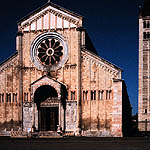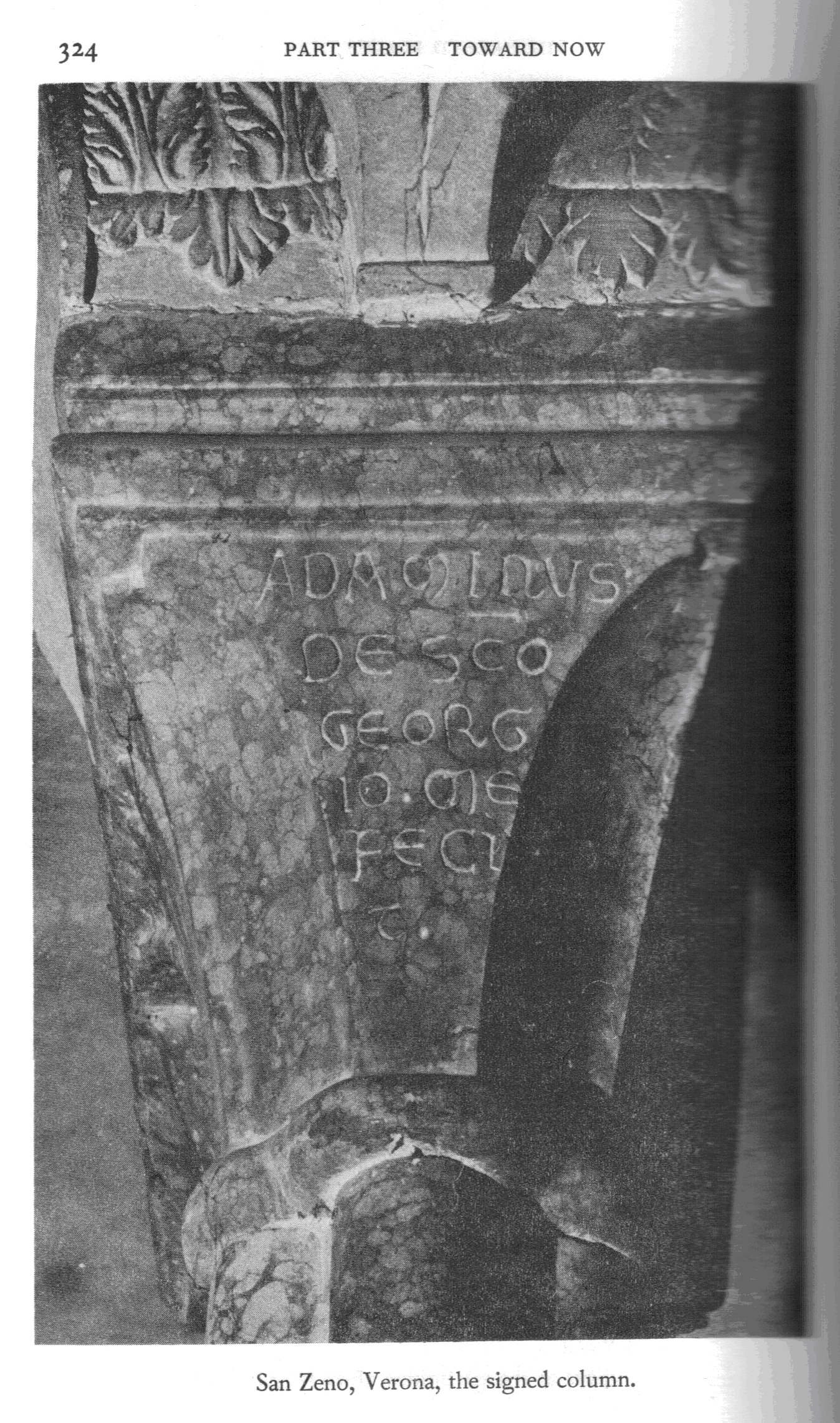In The Pound Era, University of California Press, Berkeley and Los Angeles, 1971, p. 323, Hugh Kenner writes:
It is inconspicuous in the semidarkness, on the left as you descend to the crypt; a double shaft with a common capital, shaped from one block, and inscribed as though in proud afterthought with ornate freehand letters,
Capital of Column, San Zeno Maggiore, VeronaADAMINUS
DESCO
GEORG
IO. ME
FECI
Tand [Edgar] Williams, who was in Italy on an architectural fellowship, asked how the hell we could have any architecture when we ordered our columns by the gross. It was a Luminous Detail, with the capacity to admonish the present. Mind focused here once, it says, a person knew this stone and the stone proclaims the person. (Pride in the work: Ruskin stirs, who had lived until Pound was 14 and had taught Europe to measure the craft by the craftsman's involvement.)
One may observe that by changing ADAMINUS to Adamo, and dropping the Desco/Georgio, Pound fuses the specific with the universal: a particular man -- First Man -- all men.
HOME
San Zeno Maggiore
Verona, Italy
1120-1138
